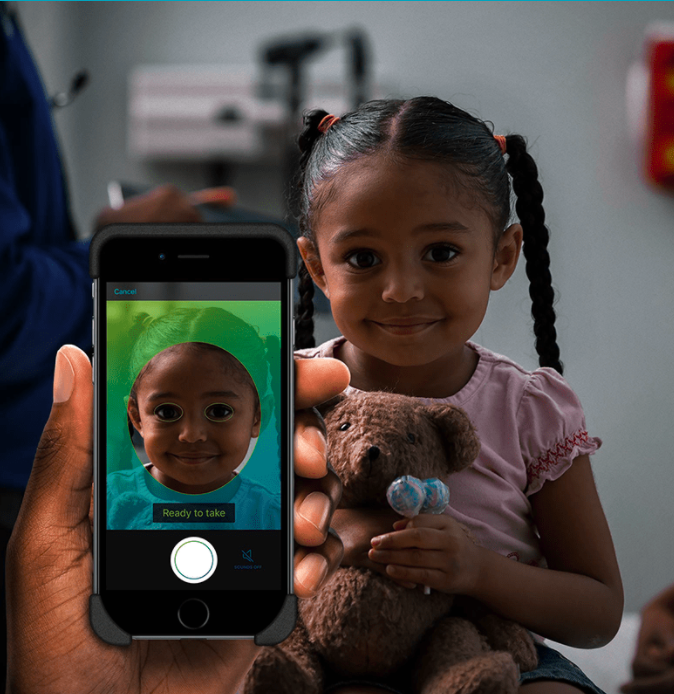In the year 2000, the International Association of Prevention of Blindness (IAPB) commenced World Sight Day on the second Thursday of October. Now, twenty-one years later we continue the tradition with the theme of “Love your eyes”. Sounds so simple; of course, we love our eyes; but have you cared enough to get them checked? This year we spread awareness on eye health, promote you to get a check-up, and motivate others to do the same.
Ophthalmology is not only essential for life but has some of the simplest treatments. So, it is a shame that over a billion people do not have access to primary eye care. Recent research shows that 90% of the people with visual loss are in middle to low-income countries and 90% of the visually impaired have refractive errors or cataracts which have very cost-effective treatment options.
Education and spreading awareness are key to mobilizing people. World Sight Day, Glaucoma Awareness Week and Eye Donation Week are a few ways we observe the importance of diseases, especially now with the world at our social media fingertips.
What about that portion of the planet living away from the bright screens and colourful buttons? We take our skillset to them. School screening for the early management of refractive errors and amblyopia. Cataract camps to help elevate the plight of people losing their livelihood to preventable blindness. Diabetic retinopathy camps have also taken up some attention with the rise in lifestyle diseases.
Deep Neural Screening
In 2003, Verily and Google’s AI research division began to devise an algorithm to automate the diagnosis and grading of Diabetic Retinopathy – a disease so easily treated in its early stages and tragic when presented late. Based on 1,28,000 images, validated by ophthalmologists, the system uses deep neuronal learning to build its algorithm in detecting referable moderate to severe diabetic retinopathy and diabetic oedema.

IDX-DR (Image Source: Design Awards)
Since 2017, the AI has been in use in the Aravind Eye Hospital Systems. It is incorporated into the fundus camera that photographs the retina and grades the disease. It has been shown to have a 97.5% accuracy rate when compared to ophthalmologist-based clinical grading. This gives the health care providers more time to focus on care, counselling, and treatment. Similar AIs are under research in the United States called the IDX-DR as well as in China.

GoCheckKids (Image Source: GoCheckKids)
In the pediatric and refractive world, smartphone-based applications help you screen your eyes for refractive errors. GoCheckKids is a Gobiquity app that is based on photo screening. It is very simple to use – just like a point-and-shoot camera. The primary objective of the app is to help in the early detection of amblyopia risk factors. With less than 15% of US preschools kids receiving a proper eye exam, this app is now being used by paediatricians and ophthalmologists alike.
Another phone-based gadget is the Netra Autorefractometer, an EyeNetra device. Just attach your phone to the virtual reality-like headset and adjust the knobs on top to align the red- and green-coloured images. It is a patient-based refractometer and can determine spherical and cylindrical errors along with the interpupillary distances.

SVOne (Image Source: Design Awards)
SVOne is a Smart Vision Labs invention based on the wavefront aberrometer released in 2016. It is a self-guided tripod-mounted device that allows you to determine your refractive error within minutes. It has been successfully used to screen patients out in over 20 developing countries like Ecuador, Gambia, and the Dominic Republic.
Of course, it always comes down to the age-old long debate of man vs machine. Will the time saved equate to clinical proficiency? Can an old-school clinical examination be replaced by a younger model? Is an automated process worth it?
In a world where population is a number out of control and the diseases with it, time is everything. We must learn to be quick and efficient. Time saved during an examination allows us to assess more patients, segregate the critical ones, and give them well-needed attention.
Old school practices will never go out of style. The core of medicine lies in our determining problems first and foremost from the history of the patient and a proper physical examination. Our entire field is based on diagnosing based on these techniques. Just because there are bigger, better, and faster machines out there, we will not be replaced as the primary contact for patients.
But yes, an automated process, ever-learning AI’s, and portable devices are the future. They are here to aid with our process of assessment. At the end of the day, patient treatment and outcome are what we are aiming for. It is the amalgamation of the two that will help us move swiftly into the future of medicine.
Mobilizing the Blind
While a 6/6 vision is ideal, many of our patients aren’t that fortunate. The marvellous doctors, engineers, and bio technicians have created several Low Vision Aids that can help these patients with their day-to-day activities. From simple handheld magnifiers and telescopes to audiovisual devices.
Smartphones have notably become very friendly for the visually impaired, with options for larger icons, brighter contrast, and better text-to-speech options. Samsung has pioneered several applications that help the blind – Be My Eyes, an app that allows a visually impaired person to connect with someone who can see to help them with visual-based decisions. Good Vibes helps deaf & blind people to connect via text that is converted to morse code in the form of phone vibrations – thus the name. Relumino is designed for low vision that helps them magnify, minify, change colours, and contrast.

Smart Vision (Image Source: Arvind.org )
Aravind Eye Hospital Low Vision Clinic in collaboration with Vision Aid, a Boston based NGO has launched a Smart Vision Spectacles that is also an AI-based, smartphone-connected apparatus that helps take pictures of images, text, books, even people in front of you and then verbally describes the scene to you. This could revolutionize the lives of the visually impaired in the future.
So, how can you #LoveYourEyes? IAPB is promoting the 4 P’s – Prevent, Protect, Preserve & Prioritize. Prevent eye diseases by eating well and follow a healthy lifestyle. Protect your eyes by wearing protective glasses to shut out the UV rays of the sunlight and harmful materials at your workplace like chemicals or welding sparks. Computer Vision Syndrome is a growing disease. You can protect your eyes with proper posture, good lighting, and remembering the 20-20-20 rule. For every 20 mins of screen time, look at something 20 feet away for 20 seconds. Preserve your eyes with regular eye checkups. Prioritize your eyes by making sure it is part of your routine medical exams and educate family and friends about the importance of vision and visual rehabilitation. So spread the word and Love Your Eyes.
References:
-
Kruk M, Pate M. The Lancet Global Health Commission on High Quality Health Systems 1 year on: progress on a global imperative. The Lancet Global Health. 2020;8(1):e30-e32.
-
Gulshan V, Peng L, Coram M, et al. Development and Validation of a Deep Learning Algorithm for Detection of Diabetic Retinopathy in Retinal Fundus Photographs. JAMA. 2016;316(22):2402–2410. doi:10.1001/jama.2016.17216
-
Arnold R, O’Neil J, Cooper K, Silbert D, Donahue S. Evaluation of a smartphone photoscreening app to detect refractive amblyopia risk factors in children aged 1–6 years. Clinical Ophthalmology. 2018;Volume 12:1533-1537.
-
GoCheck Kids – Pediatric Vision Screening Solution [Internet]. GoCheck Kids. 2021 [cited 13 September 2021]. Available from: https://www.gocheckkids.com/
-
Martha P. Lang, Helena M. Pakter, Lisia B. Ferreira, Ankit Mohan, Ramesh Raskar, Vitor F. Pamplona, Manoel M. Oliveira; Comparison of a Cell Phone-Based Refraction Technique (NETRA) With Auto-Refraction. Invest. Ophthalmol. Vis. Sci. 2012;53(14):3596.
-
EyeNetra In the Press [Internet]. EyeNetra. 2021 [cited 13 September 2021]. Available from: https://eyenetra.com/press.html
-
Smart Vision Labs – Telemedicine Vision Testing Platform [Internet]. Smart Vision Labs. 2021 [cited 13 September 2021]. Available from: https://www.smartvisionlabs.com/
-
This iPhone Accessory Replaces An Eye Doctor’s Office [Internet]. Fast Company. 2021 [cited 13 September 2021]. Available from: https://www.fastcompany.com/3049271/this-iphone-accessory-replaces-an-eye-doctors-office
-
Samsung Good Vibes App for DeafBlind Persons | Samsung India [Internet]. Samsung India. 2021 [cited 13 September 2021]. Available from: https://www.samsung.com/in/microsite/good-vibes/
-
Régo N. Samsung Launches New Apps for Deaf-Blind and Visually Impaired – COOL BLIND TECH [Internet]. Cool Blind Tech. 2021 [cited 13 September 2021]. Available from: https://coolblindtech.com/samsung-launches-new-apps-for-deaf-blind-and-visually-impaired/
-
Distribution of Smart Vision Spectacles – Aravind Eye Care System [Internet]. Aravind Eye Care System. 2021 [cited 13 September 2021]. Available from: https://aravind.org/news/distribution-of-smart-vision-spectacles/
-
World Sight Day – The International Agency for the Prevention of Blindness [Internet]. The International Agency for the Prevention of Blindness. 2021 [cited 13 September 2021]. Available from: https://www.iapb.org/world-sight-day/









